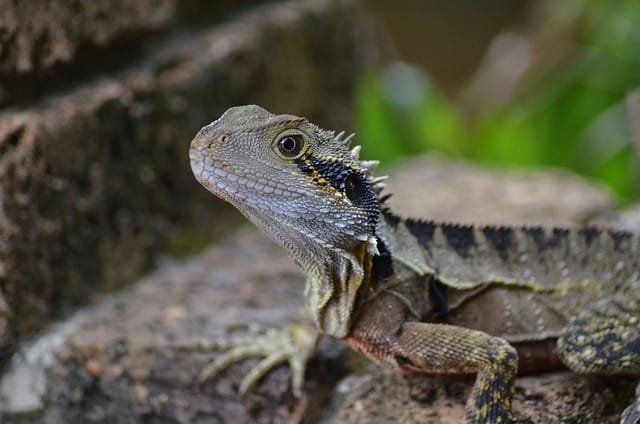If you’ve ever found yourself mesmerized by the beauty of hibiscus plants, you might have wondered whether your scaly companion, the bearded dragon, can share in the delight by munching on those vibrant hibiscus leaves. After all, a happy belly leads to a happy lizard! In this guide, we’re diving deep into the world of hibiscus leaves and exploring whether they make a suitable treat for your reptilian friend.

Unraveling the Bearded Dragon Diet
Before we start dissecting hibiscus leaves, let’s peek into the world of bearded dragons’ dining habits. These little critters are quite particular about what they put on their plates. In the wild, they nibble on insects, vegetation, and the occasional fruit. But when they moved into the cozy corners of our homes, they brought their dietary quirks with them.
The Hibiscus Plant: A Closer Look
Ah, the hibiscus plant, a true showstopper in any garden! Those big, colorful flowers and those luscious green leaves – a feast for the eyes. But can your bearded dragon join in the feast? Well, it’s not as straightforward as it seems. You see, hibiscus leaves are just one part of this botanical wonder. The leaves, the flowers, and even the stems are all on the menu, but in moderation, of course.
Should They Munch or Should They Pass?
Alright, here comes the million-dollar question: can bearded dragons chow down on hibiscus leaves? The answer is a cautious nod, like a sage reptile giving its seal of approval. But hold your horses – there’s a catch. Those hibiscus leaves should be more of a “once-in-a-while” treat than a daily buffet. Why, you ask?
Bearded dragons have certain dietary needs that should be met with precision. Imagine if your scaly friend overindulged in hibiscus leaves like we sometimes do with chocolate – it might lead to some tummy troubles.
Navigating Nutritional Waters
Let’s delve into the science of it all, shall we? Hibiscus leaves do bring a little nutritional dance to the table. They offer vitamins and minerals that can make your bearded dragon’s taste buds do a happy jig. But, and this is where the plot thickens, hibiscus leaves also contain something called oxalates. These little fellas have the ability to bind with calcium, potentially causing a ruckus in the delicate balance of nutrients.

A Culinary Adventure: Preparing Hibiscus Leaves
Imagine you’re hosting a gourmet dinner for your bearded dragon. What’s on the menu? Hibiscus leaves, of course! But before you serve up a plate of these leafy delights, there are a few steps to take. First, a thorough rinse to bid adieu to any lingering pesticides. You wouldn’t want any unwanted chemicals crashing the party, would you?
Next, portion control – because even lizards can have eyes bigger than their stomachs. Serve up a suitable helping, and you’re ready to roll. Now, here’s the twist: you can either serve these leaves au naturel or give them a little sizzle in the pan. Cooking hibiscus leaves? Who knew!
Tummy Grumbles and Tail Wiggles
So, what’s the verdict? Can bearded dragons eat hibiscus leaves without raising their tiny eyebrows in suspicion? Well, it’s all about balance. Your scaly friend can indeed nibble on these leaves and even enjoy the occasional flower power. But don’t forget, variety is the spice of a bearded dragon’s life. Mix those hibiscus leaves with other safe veggies and fruits, and you’ve got yourself a happy dragon dance.

The Grand Finale: A Nutritional Symphony
In the grand tapestry of your bearded dragon’s diet, hibiscus leaves can be a colorful thread. They bring a burst of flavor, a dash of nutrients, and a hint of excitement to the table. But as with any culinary adventure, moderation and balance are key. So, if you ever catch your dragon eyeing those hibiscus leaves with curiosity, rest assured – a little indulgence won’t hurt.
Remember, you’re the chef curating a gourmet menu for your scaly companion. Mix it up, keep an eye on their reactions, and enjoy the little tail wiggles of contentment that follow a well-prepared meal. And who knows, maybe your bearded dragon will develop a taste for hibiscus leaves that rivals their love for basking in the sun.
So there you have it, the hibiscus tale: a flavorful journey through the world of bearded dragon cuisine. Go ahead, share the love, and let those dragons savor the occasional hibiscus leaf. After all, a happy dragon is a dancing dragon, and those wiggling tails speak volumes of gratitude!
I, Mark Antonelli am highly interested in pet care tips. The experiences I gained through university life in animal sciences were also helpful to identify the best tricks for caring for and feeding varying kinds of pets. I know the majority of people love to own a pet. Yet, there is a guilty of owing a Bearded Dragon due to a lack of information about how much friendly and peaceful they are. I thought of filling this gap with detailed writings about this Pogona genus Bearded Dragon. All my team is also giving me great support to fulfil my mission. Hope you will enjoy the journey with us.

